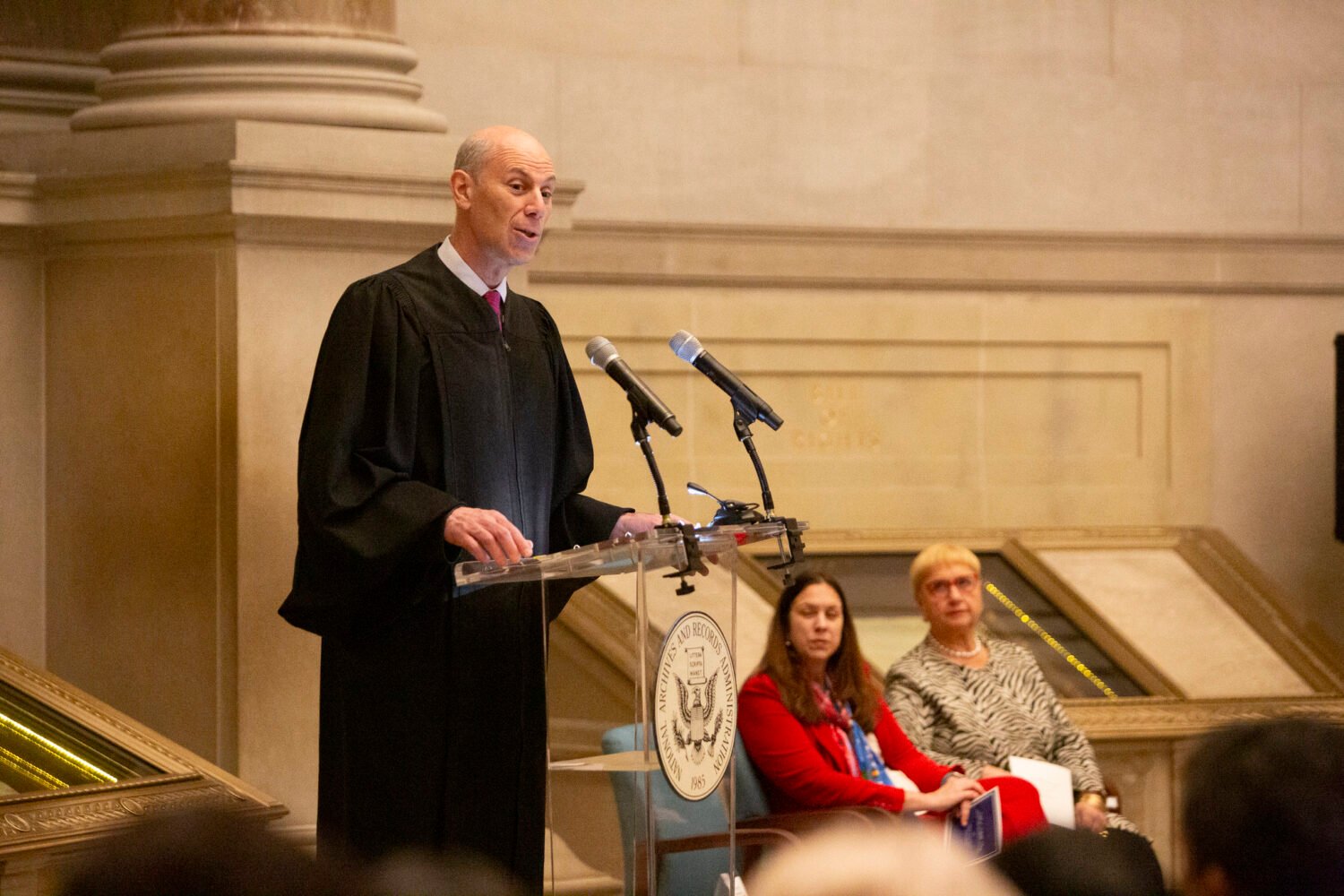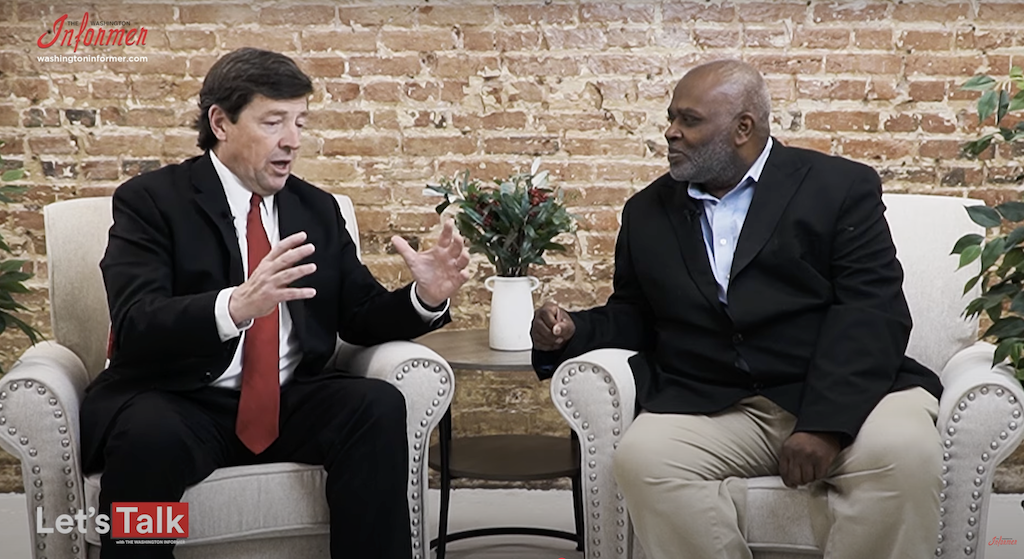On a Wednesday afternoon in late April, Jennet Inglis dropped her wife off to go shopping. She parked her car, a Honda Civic with distinctive purple hubcaps, and started walking up 12th Street toward U, her car keys looped around her finger. Approaching the intersection, she heard footfalls behind her. “This little fella came up,” she says. “He was half my height, practically. Then I felt him grabbing my hand from behind.”
“I should have known to just give him the damn keys,” Inglis says, but she didn’t because her dogs were in the car: the service dog that assists with her autism, and her wife’s emotional support dog. After she fought him, Inglis says that her attacker ripped the keys from her hand, severely injuring the finger the keyring was hooked on, then pushed her to the ground, where she hit her head on the curb.
Inglis remembers the person who took her keys throwing them to an accomplice down the block who was closer to her car. The two suspects hopped in and drove off, disappearing for a few hours before police recovered the car in Prince George’s County, dogs still safely inside. The DC police have arrested two suspects in the case. They’re both 15 years old.
Inglis’s story is part of a recent trend: Carjackings in the District have surged since the pandemic, in particular incidents that involve teens. This has led to a sense of fear among some DC residents. “I’ve been to too many meetings where people are concerned about public safety,” Mayor Bowser said at a February press conference on the rise in youth-involved carjackings. Regarding carjackings, she said, “The fear and anxiety I hear in our residents, I haven’t heard in a little bit.”
And while the data does reflect a rise in carjackings—the DC police’s online carjacking dashboard suggests that incidents have nearly tripled since 2019—some criminal justice experts urge caution when interpreting these numbers, saying that they don’t represent an out-of-control spiral in youth crime. Neither, they say, do the data paint a holistic picture of the grief and community underinvestment that are causing young people to act out.
The Popular Narrative
The data on carjacking is a bit of a head-scratcher. According to the police’s carjacking dashboard, there were 25 teens arrested for carjacking in 2019. Then, in 2020, that number jumped to 59, and it leapt to 100 in 2021. But the carjacking surge is an outlier: Youth-involved crime overall is in decline. Teens are being charged with crimes at significantly lower rates than before the pandemic: Data from the Office of the Attorney General shows a 51 percent decrease in juvenile charges since 2019, and the subset of these crimes that are violent has decreased by 46 percent.
Experts don’t have a straightforward explanation for why carjackings are up when other categories of youth-involved crime are down. But one narrative often repeated online, in the news, and even among police is that young people are simply carjacking for entertainment: joyriding in stolen cars and posting about it online, escaping with limited consequences because of toothless laws, then repeatedly and remorselessly reoffending. “We’ve seen young people who commit carjackings just for the fun of committing a carjacking,” DC Police Chief Robert Contee explained at the February press conference on youth-involved carjackings. “They have friends who see them do it, they do it. We’ve had young people committing carjackings and while they’re being pursued by the police, they’re livestreaming themselves laughing.”
“Let me tell you something,” he added, “playtime is over. This is not a video game.”
Eduardo Ferrer, a professor at the Georgetown Juvenile Justice Clinic, agrees that juvenile crime patterns are “faddish”—certain crimes become prevalent at certain times, like cellphone snatches or unauthorized use of a vehicle—and carjacking appears to be a current trend. But he worries that tough-on-crime rhetoric is counterproductive and misunderstands the root causes of the increase in carjackings that began just after the onset of the pandemic.
“When we went into lockdown,” Ferrer says, “we saw immediate disconnection from the positive outlets, communities, and opportunities that young people had.” For the kinds of teens who are now committing carjackings, the pandemic may have had two effects: shutting down programming that’s essential to healthy youth development, and exacerbating kids’ pre-existing trauma, leading to riskier behavior.
“Nothing to do during the day”
While it may be tough to understand how a sports league or tutoring program could be a credible alternative to violent crime, many youth advocates and criminal justice experts agree that it is.
“The first thing that always comes out of their mouth is that there’s a lack of recreation,” the author Eyone Williams says of the at-risk youth he mentors through the District’s Credible Messenger program. “When they were younger, they had this and that. But now they don’t have nothing to do during the day, so they always getting caught up in things that are not productive or safe.”
Kimberly Perry, executive director of the youth advocacy group DC Action, has been hearing the same things. The youth she works with “don’t want to fall into the bad peer pressure of doing some of these silly things that hurt their neighbors, hurt their own families, and hurt themselves and their futures,” she says. “Instead, they would like to be doing something else, they just don’t always know what it is, or where it is.”
One reason for this, Perry explains, is that lots of community-based programs for young people are “currently operating at partial capacity.” Even as the pandemic recedes, out-of-school programs (like tutoring, arts programs, sports leagues, and mentoring) have not returned to pre-pandemic levels.
In a January youth forum, one ninth grader explained that activities prevent youth crime not simply by occupying kids during the hours of the program but also by giving them “something to look forward to in the future so that they won’t have to be involved in a crime ever.”
These future-oriented activities can make teens feel like they have too much to lose to risk flouting the law. In Williams’ experience, “Kids that have good things going on at home and activities to participate in—I don’t know any kid like that that goes out and does a carjacking. I mean, a person that has a lot of stuff going on, why would you go on and make some of these bad decisions that we see in the news?”
Ferrer also believes that there’s a developmental reason that these programs help curb crime. “Young people need new and novel experiences to grow,” he says. “That’s just part of brain development; they’re going to seek out new things. And what we want is for those new things to be trying out for the school play, getting their first job, going to prom.” But when the menu of opportunities shrank during the pandemic, Ferrer believes that “young people went looking to have their needs met, and that’s what we’re seeing with the armed carjacking.”
Ferrer sometimes struggles to explain to teens he works with what’s at stake when they’re making decisions. “If I do the right thing, then I’ll go to college, I’ll have a good job, I’ll be able to provide for my family—that’s not the experience of a lot of young people in the District. It’s hard to counsel a young person, ‘Look, if you do what you’re supposed to do, things will work out,’ when they see so many examples every day of things not working out.”
He adds that a lot of kids he works with have experienced so much violence that they don’t know if they’ll live to see adulthood. “If you live in a world where you don’t know whether you’re going to even make it to 21, let alone what your quality of life is going to be, there’s less of a reason to delay gratification, which can lead to riskier behavior.”
The Role of Trauma
At the February press conference on youth-involved carjackings, Prince George’s County executive Angela Alsobrooks cited trauma as a primary cause. “The blunt truth,” she said, “is that our children are angry. Many of our children have been emotionally traumatized, and as we well know, hurt people hurt people. The sheer depravity that we are seeing in the crimes that are being committed is a reflection of what these children are experiencing both at home and in the community.”
Ferrer also sees trauma as an engine of youth-involved crime: While far fewer teens have come into contact with the justice system in recent years, Ferrer notices that the young people who do get arrested “seem to have experienced far more complex trauma than in the past.”
“The number of young people I have on our caseload right now that have lost friends and family to gun violence, that have been the victims of gun violence themselves, that have lost their parents, either to disease, addiction, jail, or violence, seems higher, feels higher, than before” he says.
The trauma of the pandemic exacerbated these pre-existing issues for many kids. Kimberly Perry is “still shocked at the stories we hear from young people about how many lost a parent, a grandparent, or a close family member. Losing teachers, and other important adults and mentors in their lives.” She also points out that the economic recovery hasn’t reached everyone, and “people would be surprised at how much teens worry about their parents not being able to pay the rent next month, or having enough food on the table.”
These circumstances matter, because trauma has a direct effect on decision-making. Trauma conditions people to believe that the world is unsafe, which can paradoxically lead them into greater danger. Seeing the world as unsafe makes people much more impulsive and reactive to whatever stimuli are present, sidelining the parts of the brain that process long-term consequences and risk. An array of studies has shown that people with significant trauma histories can be overly motivated by short-term reward at the expense of weighing the possible cost.
Ferrer believes that the pandemic widened a gap between young people with healthy coping skills and those without—mostly because being stuck in the house affects kids differently depending on the safety of that environment. “If you have a good family environment,” he says, “that acted as a buffer against the stressors of the pandemic, regardless of whether you lost schooling or after school activities or other connections.” Those kids, for the most part, aren’t carjacking.
But for young people with difficult home lives, the pandemic cut off positive outlets while locking them into the orbit of their house, keeping some in proximity to negative influences and traumatic situations. “The ones that get arrested for a carjacking—it’s not just any average, typical young person,” Williams says. “It’s young people that are already disadvantaged, that are desperate. And if a person feels like they have nothing, what do they have to lose?”
Harsher Consequences
At the February press conference on youth-involved carjackings, the mayor, police chief, and other officials did acknowledge the role that pandemic trauma has played in youth-involved crime. But “accountability” was the operative word in their remarks, implying (and sometimes outright stating) that the way to tame carjackings was by implementing harsher consequences for kids.
Youth advocates reject the notion that more severe consequences would deter crime. “Young people are not making the kind of rational risk calculation that deterrence assumes,” Ferrer argues, “as if they’re a rational actor sitting there doing a pro-and-con list before they go out and commit crime. That’s just not happening.”
Multiple studies suggest that focusing on punishment rather than rehabilitation can have adverse effects—for instance, a 2009 meta-analysis of various studies of juvenile recidivism found that therapeutic interventions (like skill-building and counseling) were the most effective at preventing youths from reoffending, while deterrence (“scared straight”–style interventions) and discipline (boot camp-type punishments) were associated with upticks in recidivism.
DC’s juvenile justice system operates, to some extent, with this type of research in mind. Unlike many jurisdictions, DC does not have mandatory minimums or sentencing guidelines for people charged as juveniles. Instead, a judge will review the teen’s life circumstances—previous offenses, school attendance, behavior at home, etc.—to come up with a plan. While some youth may be placed in detention, others are returned home and ordered to comply with various conditions, which might include electronic monitoring, following a curfew, or participating in counseling. (A caveat: the juvenile system doesn’t serve all teens—at the age of 16, some young people can be charged as adults by the US Attorney.)
Some charged teens will be assigned a mentor through the city’s Credible Messenger program, which is where Williams comes in. “Of the maybe 100 individuals that I’ve mentored in just the last year, I’ve only lost about two or three to gun violence or incarceration,” he says, specifying that the credit isn’t his but the program’s. “Before we met them, they were catching gun charges, stolen car charges—all the things you get caught up in when you’re an adolescent in the street culture.” Now, he says, many of them are going on to get good jobs and be involved in their communities.
Williams’ claim contradicts a common perception. “There is this false idea of a revolving door in the justice system—of kids committing a carjacking and being released to commit another one the next day,” says Emily Gunston, the deputy attorney general for legislative affairs and policy in DC Attorney General Karl Racine’s office. While some young people commit multiple carjackings before they’re caught for the first time, she says that rampant recidivism is not evident in her office’s data: in 2021, only 14 percent of juveniles that the Office of the Attorney General charged with a carjacking went on to be charged with another carjacking in the District.
There are important wrinkles to this data—it’s possible, for instance, that teens charged in DC are reoffending in other jurisdictions, which OAG’s data would not capture. It’s also possible that teens are reoffending and not getting caught: Most carjackings, after all, go unsolved. In the first third of 2022, only 57 of 171 carjacking offenses were closed, according to the DC police. And while 71 percent of those arrested during this period were juveniles, it’s also possible that young people are overrepresented in the arrest data. For one, kids may be likelier to get caught. Second, teens often offend in groups, which means that multiple kids might be arrested for a single carjacking, inflating youth arrest numbers relative to the total number of crimes.
Nonetheless, heated rhetoric coming from some public officials and Twitter accounts has begun to remind some experts of the “superpredator” myth of the ’90s: remorseless teen criminals who were supposedly about to create a crime wave of never-before-seen proportions. That wave never arrived, but the superpredator idea helped birth an era of extremely harsh punishments for young people (particularly young men of color), which shows how thinking of kids as criminals can have real effects on their fate.
“A lot of people that’s quote-unquote ‘hard on crime,’ they don’t want to hear anything about investing in people who have already made mistakes,” Williams says. “But if you don’t invest in the people that make mistakes, then the people that make mistakes come right back into society and make those mistakes again, so you’re not working on the problem.”
Jennet Inglis actually agrees. While being carjacked was unsettling and physically traumatic for her (she says she has to have surgery on her injured finger), she believes that kids involved in carjacking “need something to do” and she’d be glad if that something involved making amends. “They’re teenagers, for God’s sake,” she says. “They’re not adults—their brain isn’t formed fully. I think rehabilitation is what it’s got to be about.”















